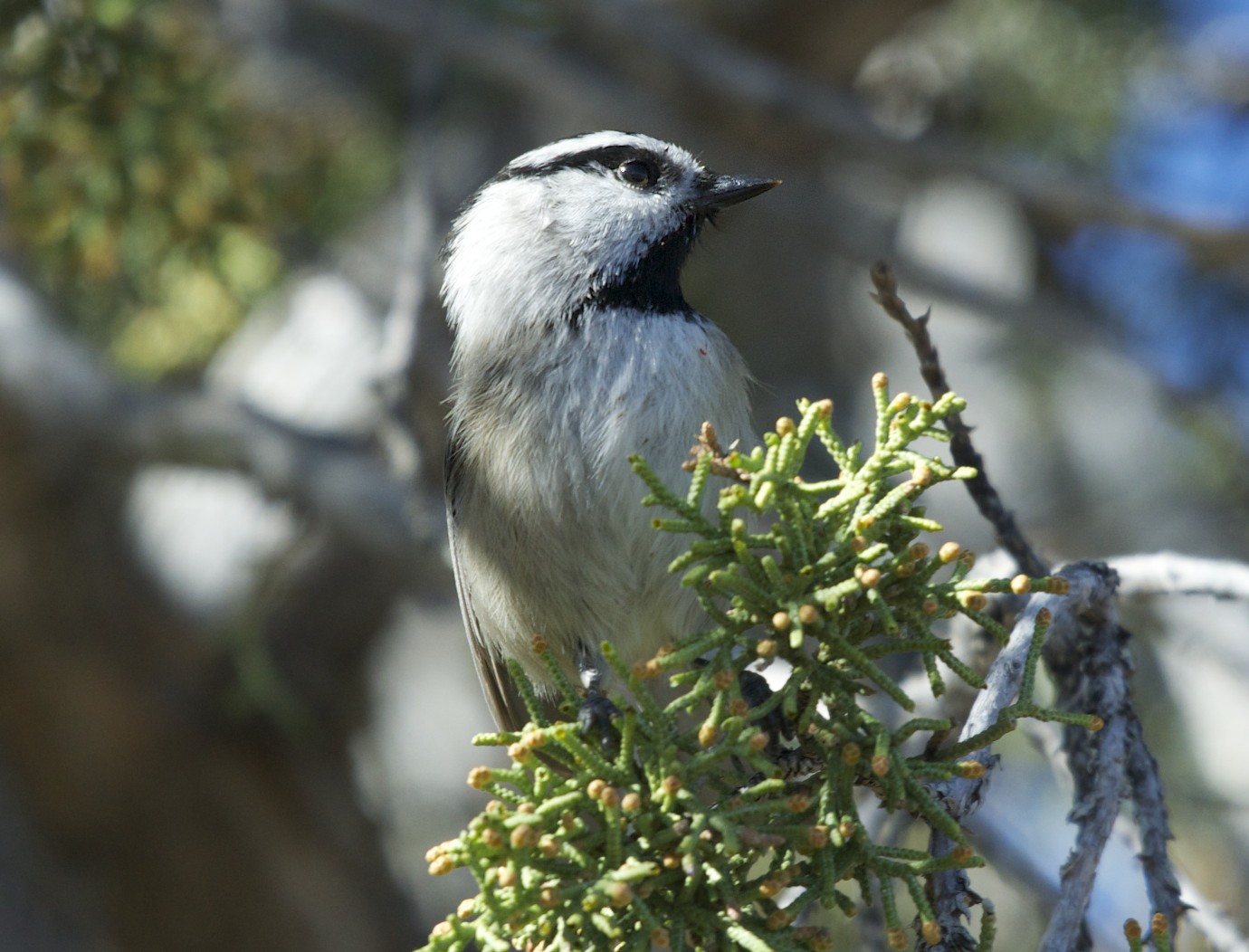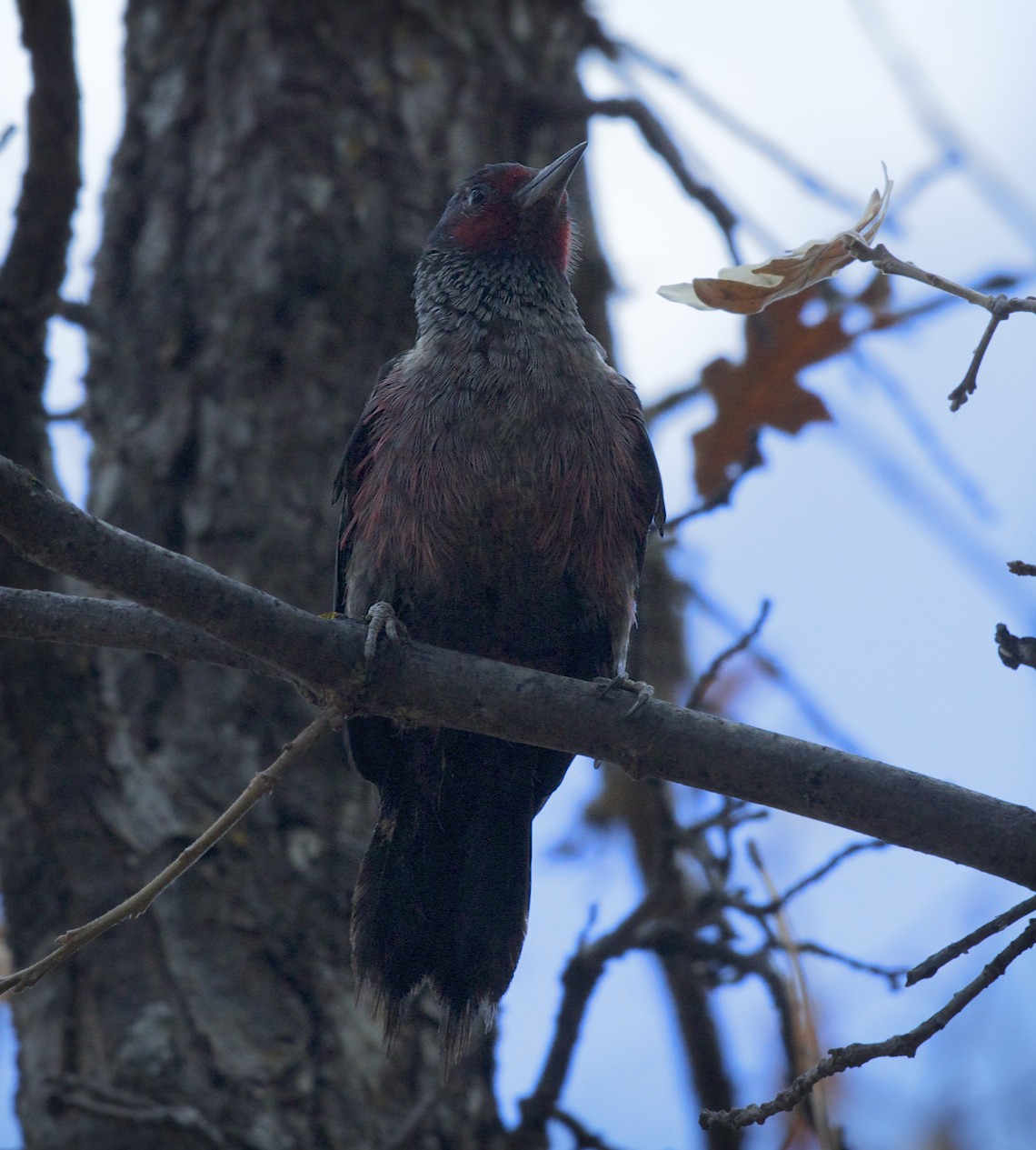Late October is a tricky treaty sort of time. There is so much pumpkin flavoring floating around, creeping its way into beers and confections, into ciders and even lotion. Feet become dry and cracked. Small disguised strangers come to one's home and demand sugary benefactions without providing any compensatory services. Plus it's starting to get cold, as the gaping chasm of winter, with it's icy teeth and abysmally dark, frozen gullet, begins to close its jaws.
Yet there is opportunity here as well. Some pumpkin stuff isn't disgusting. Pumpkin lotion and dry feet can compliment each other nicely. Kids in costumes can be cute. Best of all, one can start to get cold-weather winter bird species without having to fully endure the winter itself. Of course, the hardcore tundra dwellers will not be in Arizona for another few weeks, but some of those other frost-biters have now arrived in the state, or if they are resident, are now more visible. Butler's Birds teamed with Tommy DeBardeleben, Gordon Karre, and Mark Ochs this weekend for some preemptive birding around the Flagstaff area, home of a college, good birding, and a terrific red ale (Lumberyard).
Our first stop was the Rio de Flag nature walk behind the Northern Arizona Museum. Although the walk itself is pretty small and borders a suburban neighborhood, the birding here was very productive. We had Cassin's Finches, Merlin, Bluebirds, Siskins, and all the expected AZ conifer-lovers for that area, as well as our target bird, Evening Grosbeak. Alas, the Grosbeaks and Cassin's Finches stayed pretty high, but winter's chill will force then lower in a few months and perhaps I shall return for better crushing then, if not camera frying bigger bird fish.
The finches and nuthatches were loving them some ponderosa pines, while the equally numerous American Crows were loving them some warmth-accumulating asphalt shingles--to each their own.
The next stop, south of Flagstaff along lovely Lake Mary Road, was at Ashurst Lake to scan for waterfowl. There were some prescribed burns and a lot of smoke in the area, but by time we reached the water it was not a deterrent. The waterfowl numbers were high and diversified, though lacking rarities, but it was scope-views only so I did not bother with waterfowl photography.
Instead, here is a Mountain Bluebird trying to blend into its surroundings. Not bad blending eh?
The MOBL is a mucho gorgeouso bird. Unfortunately they are mostly cowards unless you find them actively feeding or, even better, drinking/bathing, so they often require heavy cropping.
While my better trained and better disciplined birder accomplices were scanning the lake, I continued to explore the surrounding juniper scrub. Kinglets, Nuthatches, and a few Titmice abounded, but the dominant species was the Mountain Chickadee. By Chickadee standards these birds are pretty good-looking and creative with their plumage. By regular standards they're pleasant and professional. This bird is sporting just a hint of yellow on the end of the bill. It is possible this is just lighting. It could also be Sandwich Tern hybridization. More research is required.
Like other species of Chickadee and many other smaller, fluffy birds, the MOCHs are considered by many birders to be 'cute'. 'Energetic', 'sweet', and 'darling' are also used to describe them. This is well and good; often these adjectives apply quite nicely.
But get too near their space, their juniper heart tree, and there will be blood, blood and bellowing.

Better known for bellowing and blood-letting, a few Bald Eagles also terrorized the lakes, seeming to delight greatly in trying to kill their American Coot prey via cardiac arrest instead of direct assault. They would ride the strong winds right over the water, dipping every once in a while to cause the Coots much consternation and belabored flushing (y'all know how Coots struggle to take off). Big, strong, mean, often getting involved with other groups of birds when it needn't, and sporting too much jewelry...a fitting national symbol??
My final stop for the day was Mormon Lake. We first swung by the elevated lookout area just in case any Unshaven-legged Hawks or, much rarer, Northern Shrikes, had arrived early (they hadn't). The Mormon Lake basin was empty, and likely will remain so until the early spring run off, but the many different grasses, shrubs, molds, and shadows of the valley made for an impressive sight nonetheless.
#iwanttoshootladnscapeslikejensanford
The lodge area and campgrounds around Mormon Lake are one of my favorite northern Arizona birding spots. It was here two years ago that I had a very good day--teenagers might even say epic--in picking up lifer EVGRs and RECRs, even getting some decent photos.
The high elevation pine and oak forests around Mormon Lake and Flagstaff, in general, are great habitat for Lewis's Woodpecker. We had seen two birds prior to our arrival at this final site, and pulled to the side of a dirt access road to excitedly observe three or four more as we approached. We were amazed to see so many birds so close to each other, plus this bird is just crazy, like almost tropical in its plumage. Little did we know the Mormon Lake area was, in fact, infested with Lewis's Woodpeckers.
They were distracting. They made it hard to find any other birds. My conservative estimation is that we had over three dozen individuals in the handful of acres we covered.
Something was going one, some great conspiracy of these Crow-ish Woodpeckers. It was like a movie where a character suddenly realizes he is under surveillance and people are watching him from all the corners, all the shadows, all the nut-stashing spots in the woods. There were clandestine LEWPs on the ponderosas.
They were hiding along oaken limbs, relaying information back to base.
They were perched with the sun behind them, backlit and blending into the dark tree trunks...plotting.
They perched and starring sunward, surveying their domain and contemplating conquest while pretending not to be following us through the woods, waiting for use to stray too far from the cabin sites and any other witnesses.
There was constant activity as they flew across the trails, sometimes right over us, sometimes just beyond focus in the lower shadows of trees. The woods echoed with their raucous calls, and even the Stellar's Jays trembled before them.
(trembling)
If Butler's Birds does indeed return for better finch photos in a couple of months, I fully expect to find the Mormon Lake lodge area abandoned, with the porous ruins of acorn-stuffed buildings badly shading the corpses of so many flanel-clad humans, sprinkled with a thousand tiny holes.Meriwether Lewis himself went mad and committed suicide not long after discovering this bird.
Beware. They are out there. They are coming. The Others
















Such a good day of birding you guys had! Stellar photos all around, especially the one of the Jay.
ReplyDeleteThat LEWO irruption is freaking cool, perhaps more freaky than cool. At least you don't have to worry about the lone wolf scenario like we do. I would be scared, though, of those murderous crows.
The Crows also looked ornery didn't they?
DeleteOf course, gobs of LEWPs is expected in that area, but it's still erie man.
Were gonna have to shoot a new horror movie: "The Birds 2". There's some dumb movie about these gulls that attacked somebody, and now it'll be about the Lewis's Woodpeckers (but not so dumb). Merriweather Lewis, LOL! At least you got the warning out in full detail about these potentially murderous birds.
ReplyDeleteGreat shots and post Laurence, it was awesome birding with you!
It was a good day for sure.
DeleteI hope our respective posts don't lure other birders to their demise.
Ah I love me some Lewis's Woodpeckers. I've seen so many, yet few so well... Your photos are great. Also good to see one of them "other" Steller's Jays with the fancy white spots. Thanks for the kind hashtag too... I hope it catches on.
ReplyDeleteFor sure, as long as you stay ahead of the curve in some additional genre, perhaps macros of dead stuff?
DeleteJust a happy little dash of white. One wouldn't think it to be consequential, but it really ties the room together does it not?
Nice prose, dude. Nice birds as well. It hurts me that I have not seen some of these birds. It hurts my heart.
ReplyDeleteYou come visit AZ this winter Big Red, and I guarantee you will see all of them, plus some badass thrashers.
DeleteMountain birds are badass. Lewis's Woodpeckers are superb, but we missed them when we went camping in the Cascades (damn, I still need to write part 2 of that trip... The blogging's slowed down since I started working again, I'm afraid). Your photos almost makes me want to grab my gear and head to the mountains right this instant!
ReplyDeleteCheers Doc Martens,
DeleteLewis's Woodpeckers are the genuine article. It's maybe the only North America Woodpecker that can compete with the tropical varieties in terms of color. It's so weird to think it is a mountain bird.
I hope y'all get into those peaks soon, before they're snowed in. Winter is coming.
Wow...
ReplyDeleteMost..uhh..interesting spam ever.
Thank you for your enlightening...work.
I saw this too! What the....?!!! Definitely most interesting spam.
ReplyDelete